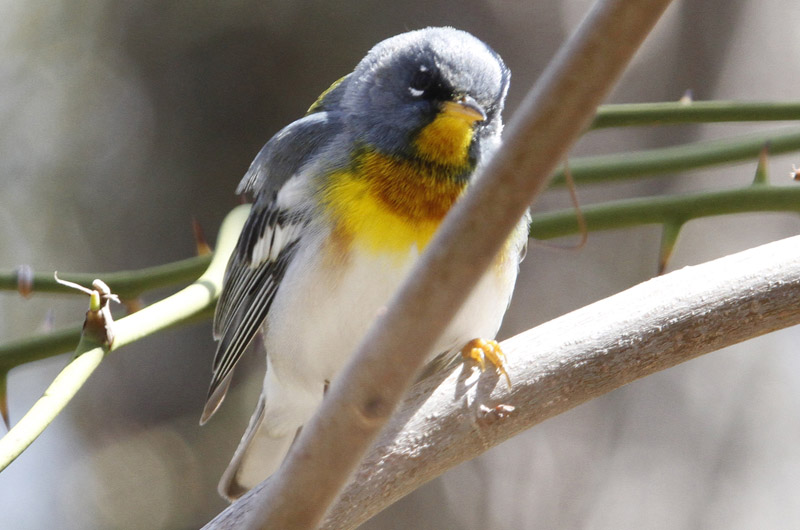Fish crows and great egrets probably breed on Martha’s Vineyard, although solid evidence of these activities is lacking. And it is not easy to gather this evidence.
First, the fish crow. They were abundant this winter, but now they are scarce.
Two weeks ago I suggested that they were gone for the season since several observers commented that the winter flocks were not seen anymore. However, Allan Keith observed a single fish crow near the Steamship Authority dock in Vineyard Haven on April 15; it was a silent individual that flew past. This one individual may be half of a breeding pair. Two years ago we had six rather vocal fish crows through the summer near the Tisbury Marketplace, but no evidence of breeding was observed. What do we need to see? A fish crow carrying nesting materials — sticks or other vegetation — will confirm nesting, as will observations of a fish crow tending their nest. Such things might be easier to see now, before the leaves emerge and conceal nests in deciduous trees.
Of course identifying a fish crow at this time of the year can be problematic if they are not calling. They are slightly smaller than the abundant American crows and they have a more rapid wingbeat, giving the impression that they have a harder time flying than do their cousins. It takes practice to distinguish this species.
It is easier to identify great egrets, which stand almost as tall as a great blue heron and are white with black legs and a yellow beak. Numerous observers have reported them foraging in our salt marshes in the past two weeks, but their nesting colony may be miles away. Their daily commute from the colony to their feeding grounds offers the best clue to their colony location, as one mate relieves the other of nest duties twice a day, at dawn and in the late afternoon.
Look for egrets flying in the late afternoon and note where they are coming from and where they are heading. If they are flying in the same pattern for several days, one end of their flight is likely their nesting colony. Chappaquiddick, Sengekontacket Pond and Lobsterville/Menemsha are the best places to find foraging great egrets.
I wish I could offer prizes for the person who confirm nesting locations for either of these species, but that is a little beyond the scope of this column. Please keep me posted with possible colony sites. And keep an eye out for other egrets and herons.
Bird Sightings
At last we finally get some spring weather! We have had some warm days and some southerly winds since mid-April; such weather promotes the arrival of migrants as they can take advantage of tail winds to boost them along their way northward.
With the favorable weather in mind, the birds of the week are the parula warblers reported by Margaret Curtin and Ken Magnuson on April 18. They were foraging on the willow catkins at the head of the Lagoon in Oak Bluffs. To me, their arrival represents the coming smorgasbord of migrating warblers and other songbirds that will brighten our days through May and beyond. A close second are Margaret’s two hermit thrushes she observed the next day at Brightwood Park near the shellfish hatchery in Vineyard Haven.
Ken Magnuson spotted a marsh wren singing and foraging in Katama on April 14. Marsh wrens are incredibly rare on the island and most observations are from late September and October. As far as I can tell, there is only one other spring record for this species.
Catherine Deese has had an eastern towhee visiting her feeder since April 10. Jeff Bernier observed one in his yard on April 18. This species is definitely arriving en masse; soon they will be one of our most abundant birds.
Matt Pelikan heard his first chipping sparrows on April 18. Samantha Chaves, Luanne Johnson and this author also recently spotted their first of the season. They are singing their dry rattling song which is similar to the slightly more musical song of a pine warbler.
Allan Keith reports a pair of wood ducks visited a pond on his property on April 14. Zac Sweeney observed a pair of woodies on the flooded cranberry bog off Lambert’s Cove Road on April 18. Allan also found a brown thrasher along a Chilmark roadside on April 15.
Lanny McDowell had a productive morning at the head of the Lagoon on April 15, with white-throated sparrows, yellow-rumped warblers, pine warblers, and a few northern rough-winged swallows. Ken Magnuson observed the rough-wings and a ruby-crowned kinglet there on April 13, and a winter wren on April 11.
Lest we forget we live along the coast, there are plenty of shorebirds out and about now. Lanny McDowell reports both dunlin and black-bellied plovers at the Farm Institute on April 16. Tim Johnson spotted a flock of sanderlings on April 18. And Tom Hodgson discovered a group of gannets plunge-diving into the ocean near Chilmark Pond on April 14. Nantucket Sound was virtually devoid of birds on April 18, but there were horned grebe, red-throated loons and common eiders in Woods Hole Harbor.
There are lots of birds around, so please get out looking for them, and be sure to report your bird sightings to birds@mvgazette.com.
Robert Culbert leads guided birding tours and is an ecological consultant living in Vineyard Haven.





Comments
Comment policy »